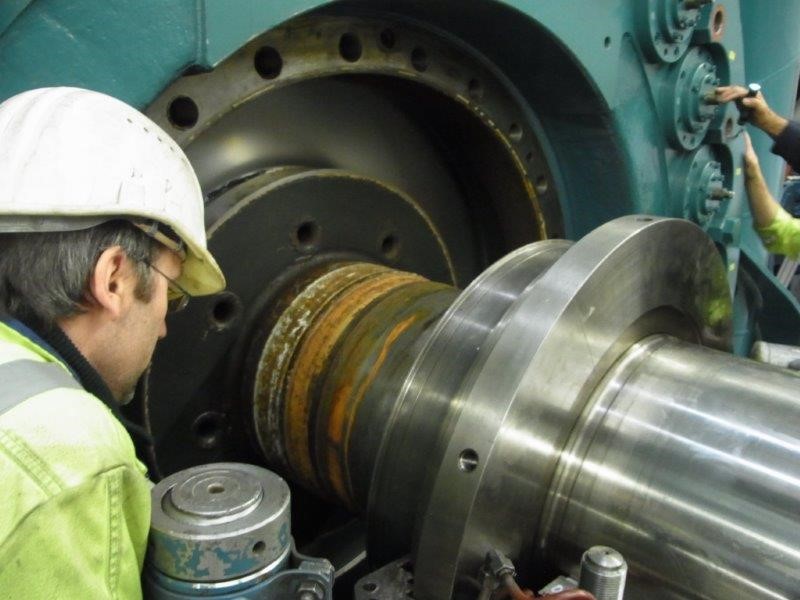Author: Henri Azibert
When analyzing maintenance or focusing on reliability, the goal is primarily on cost savings or production uptime. Yet, the proper maintenance and reliability of industrial equipment can be major contributors to energy savings. So, how does well-maintained and long-running equipment contribute to energy savings?
There are some obvious reasons as to why a reliability program will also save energy. A prevalent cause for premature failure of pumping equipment is not running a pump within its allowable operating range. It could have been oversized during the specification process, or the production needs have increased, or the service demands are variable; whatever the reason, the life of the pump is limited. A reliability effort to increase the life of the equipment will be to either trim an impeller, add additional equipment for the larger load requirements, or install a variable speed drive to adjust to the varying flow requirements. And as a result, seal life improves, bearing life is extended, cavitation damage is eliminated, all resulting in increased uptime… AND, energy savings!
Running as close as possible to the best efficiency point (BEP) will, by definition, increase efficiency. Keeping the seals well lubricated, while bearings experience reduced loads, reduces friction and thus energy losses. Often overlooked is the fact that frequent repairs of equipment can result in lost energy. To replace parts, the system must be drained. This can be a pump and any length of pipe between suction and discharge isolating valves. In large equipment, it can be very sizable volumes that may require hours to drain. In the case of hot water, all the energy used to bring the water to its operating temperature will literally be going down the drain. Although a single incident may not be noticed, when repeated routinely, it will lead to significant losses.
Proper maintenance practices are crucial as well. Among many, let’s just focus on one simple aspect to illustrate the point: clearances. When maintaining or repairing rotating equipment, it is critical to pay attention to the clearances between rotating and stationary parts. If a clearance is not returned to its design point, and in some cases reduced, much energy can be lost. Here are some examples of where this is particularly relevant.
Impeller wear rings prevent the recirculation of high pressure discharge into low pressure suction. The smaller the clearance, the greater the efficiency. This of course requires proper centering of parts, close attention to tolerances, the right choice of material, and careful installation. Another important clearance to set properly in an open impeller pump is the space between the impeller and the casing or the back plate – depending on the impeller design. All excellent maintenance practices that have the effect of increasing efficiency reduces power consumption.
A common sealing piping plan is plan 11, which recirculates discharge pressure process fluid into the seal chamber. It is used to introduce circulation around the seal to dissipate frictional heat, or to increase the pressure to maintain the proper vapor pressure margin. A close clearance bushing is used to increase the pressure in the seal chamber and control the flow rate from the discharge. A brief example shows how the clearance between the shaft and the inside diameter of the bushing is essential in restricting recirculation flow. For a 50 mm shaft, to maintain a pressure differential of 2 bar, a diametral clearance of 2/10th of a millimeter results in a flow rate of 6.2 liters per minute. With a diametral clearance of 1/10th of a millimeter, the flow rate would be reduced to 0.8 liters per minute for the same pressure differential. (Source: Fluid Sealing Association Life Cycle Cost Calculator). Thus, with the reduced clearance, 5.4 liters per minute of process recirculation could be saved. On a continuous service, it represents eliminating the pumping of 2,838,240 liters or some 750,000 gallons per year. Multiplied by the number of pumps in the facility, the reduced clearance will result in substantial energy (and cost) savings. The other benefit of this good maintenance practice is that it also increases reliability of the mechanical seal by maintaining the proper vapor margin.
Similarly, in the case of Piping Plan 23, where a pumping ring circulates process fluid out of the seal chamber through a heat exchanger and back to the seal chamber, a bushing is also used to separate the seal chamber fluid from the hot process. Without proper clearance, process and seal chamber fluid get mixed, heat is transferred from the process to the seal chamber, loosing process energy, increasing cooling loads and reducing seal reliability. Yet another prime example of the interplay of proper maintenance, reliability, and energy savings.
And then there is leakage! Correct installation and maintenance of sealing products is not just limited to the occasional pump compression packing adjustment. It must be a constant and comprehensive attention to valves, flanges, heat exchangers, pumps, piping, and all pressure containing equipment. It must be a consistent and thorough maintenance procedure. It has been estimated that Leak Detect and Repair (LDAR) programs can reduce fugitive emissions by 40% to 60%, depending on the frequency of inspections, the process conditions and the fluid emitted. The amount of product lost to leaks is easily measured in hundreds of tons at a single facility. A good maintenance program that reduces fugitive emission rates by just half will achieve considerable energy savings. And, with newer sealing technology, reduction by a factor of 10 is often achievable. (A good reference for the amount of product lost to the environment is Section 2.2. of the EPA-453/R-95-017 1995 Protocol for Equipment Leak Emission Estimates: https://www3.epa.gov/ttnchie1/efdocs/equiplks.pdf.) Reduction of product leaks results in more output for same energy, or conversely, the same output with less energy.
Proper maintenance and reliability programs can reduce costs and increase up-time while also directly benefiting energy consumption.




